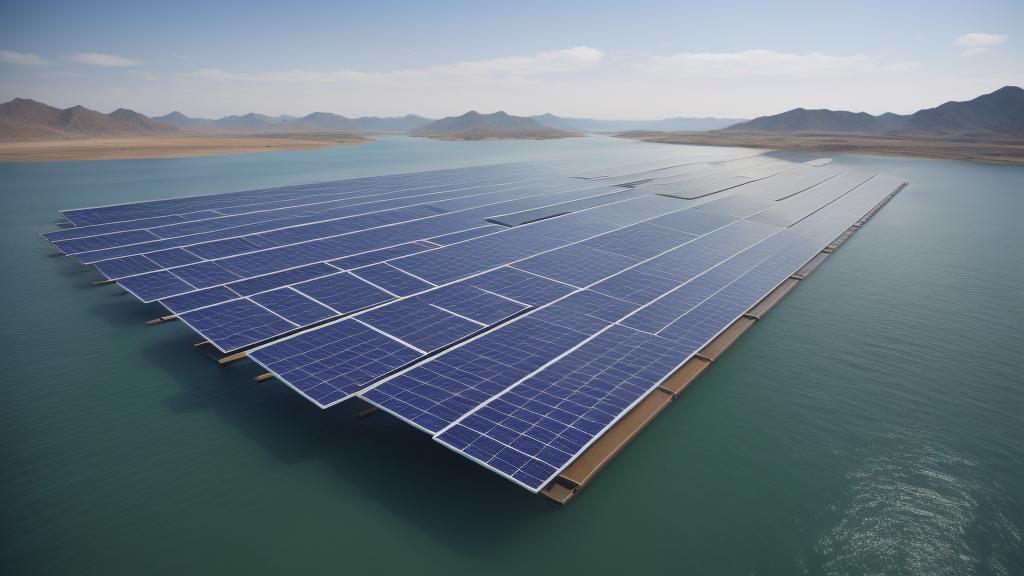In a world where the battle against climate change continues to intensify, finding innovative solutions for clean energy has become crucial. Among these solutions, floating solar farms have emerged as an unexpected hero. These solar arrays, installed on bodies of water, have the potential to revolutionize the way we produce and consume solar energy.
Floating solar farms, also known as floatovoltaics, are a fascinating blend of technology and nature. By placing solar panels on water, they address two significant issues: land scarcity and water resource management. Traditional solar farms require large tracts of land, which can be challenging in densely populated areas. However, by utilizing the surface of lakes, reservoirs, and even oceans, floating solar farms bypass these land constraints.
One of the most intriguing benefits of floating solar farms is their ability to conserve water. The panels provide shade over the water, reducing evaporation by as much as 70%. In regions facing intense heat and drought, this is nothing short of a game-changer. Essentially, floating solar farms serve a dual purpose: generating clean energy and conserving precious water resources.
The environmental impact of floating solar farms is minimal. They do not require land clearing or significant ecological disruption. In fact, they can help prevent algae blooms by blocking sunlight from reaching the water’s surface. Additionally, these installations contribute to biodiversity by providing habitats for aquatic life. While challenges remain—such as dealing with harsh weather and ensuring the longevity of offshore installations—advancements in technology are steadily overcoming these hurdles.
Asia has been at the forefront of adopting this technology. China, Japan, and India have already invested heavily in floating solar projects. In fact, the world's largest floating solar farm, located in China, spans an impressive 121 acres. The success stories there have started a ripple effect, leading other regions to explore similar projects.
Europe and the United States are also waking up to the promise of floating solar. In Europe, countries like the Netherlands and the UK are experimenting with ambitious floating solar projects. In the US, numerous states are in the planning and pilot stages, recognizing the potential to exploit water bodies that are underutilized.
Despite being in its relative infancy, the market for floating solar farms is projected to grow exponentially. Analysts predict that by 2030, the floating solar market could be worth billions of dollars. The International Renewable Energy Agency (IRENA) has dubbed it a “sleeping giant” of the renewable energy industry, emphasizing the untapped potential.
Local communities and policymakers are also beginning to embrace these projects. The economic benefits of job creation, along with the allure of sustainable development, are compelling reasons for stakeholders to get on board. However, successful implementation hinges on overcoming regulatory and logistical challenges. Streamlining permitting processes and encouraging public-private partnerships are vital steps in ensuring the widespread adoption of floating solar farms.
Floating solar farms may not be the sole solution to the energy crisis, but they undoubtedly present a promising path forward. As we continue to push the boundaries of renewable energy technology, these installations remind us that nature and innovation can coexist harmoniously. By unlocking the potential of our bodies of water, we not only pave the way for greener energy but also contribute to a more sustainable future for coming generations.
In conclusion, the exploration of floating solar farms is an exciting endeavor in the realm of clean energy. It's a call to action for governments, industries, and communities to think creatively and embrace transformative solutions. As we drift into this new era of innovation, the question is not if, but when and where these floatovoltaics will become a common sight. The future is indeed bright, and it glistens on the surface of our waters.
Unlocking the potential of floating solar farms: An innovative solution for clean energy

